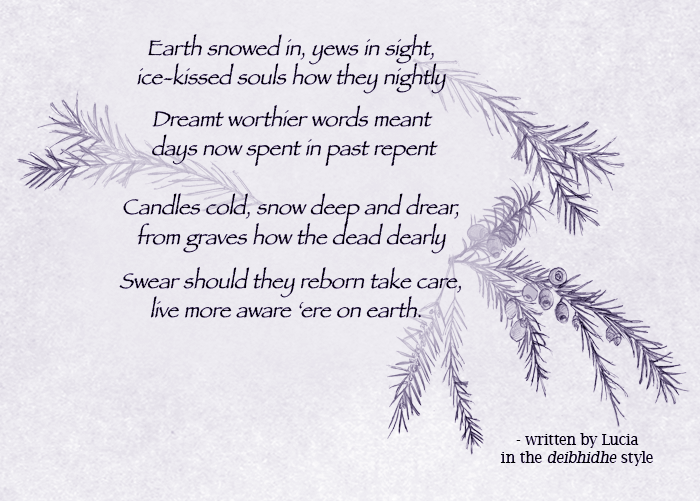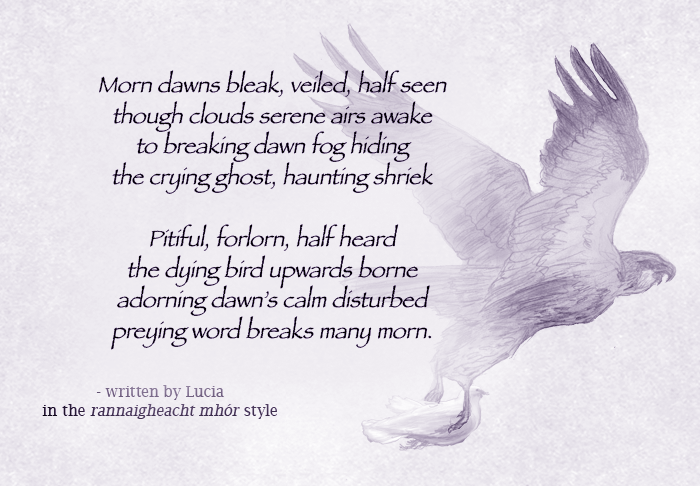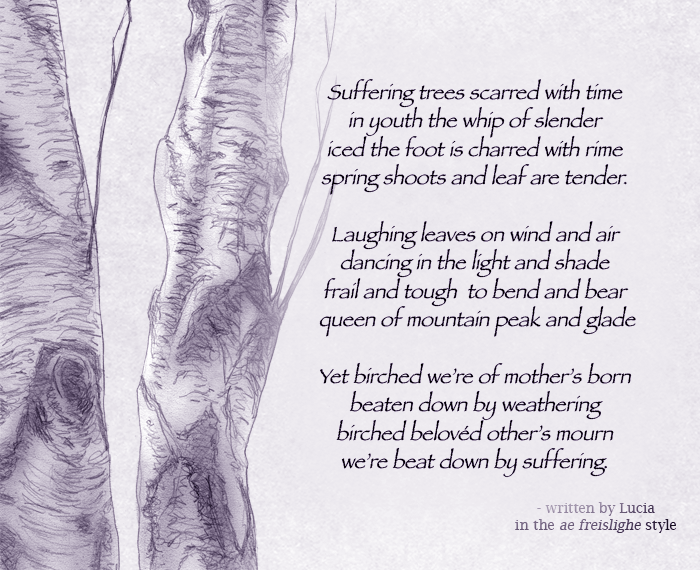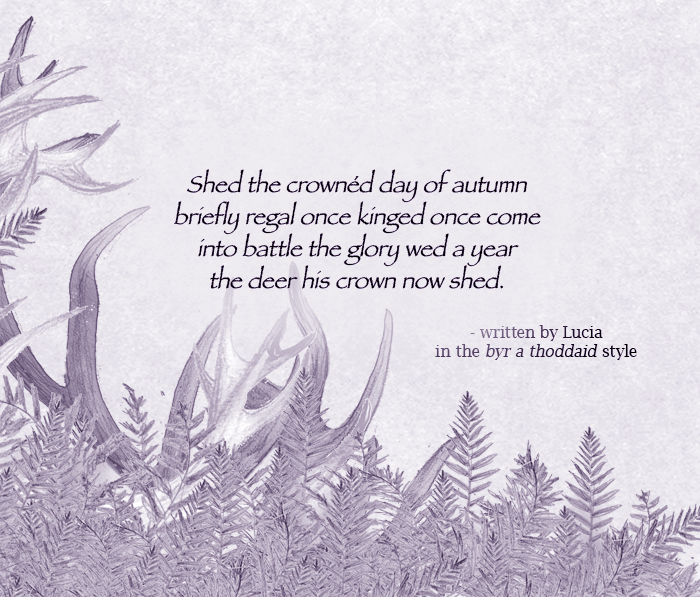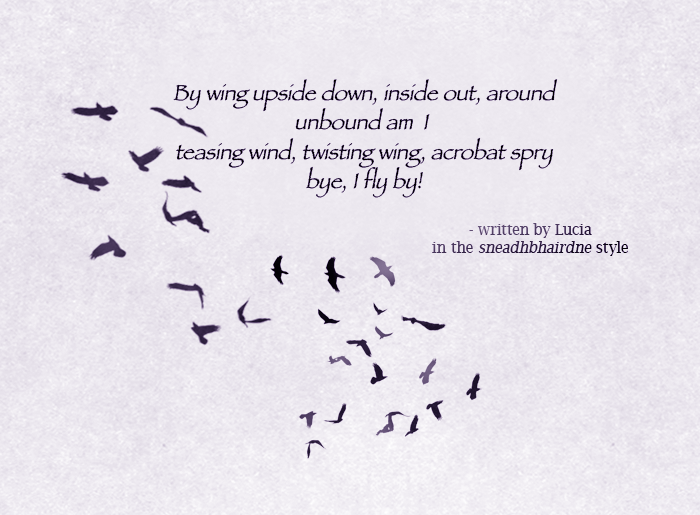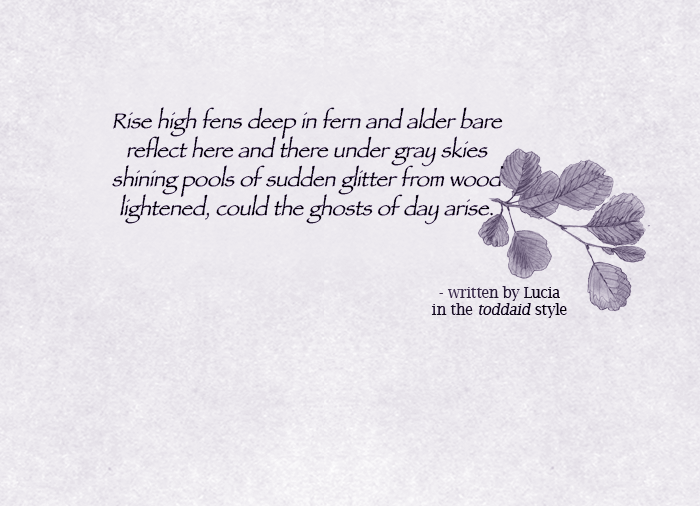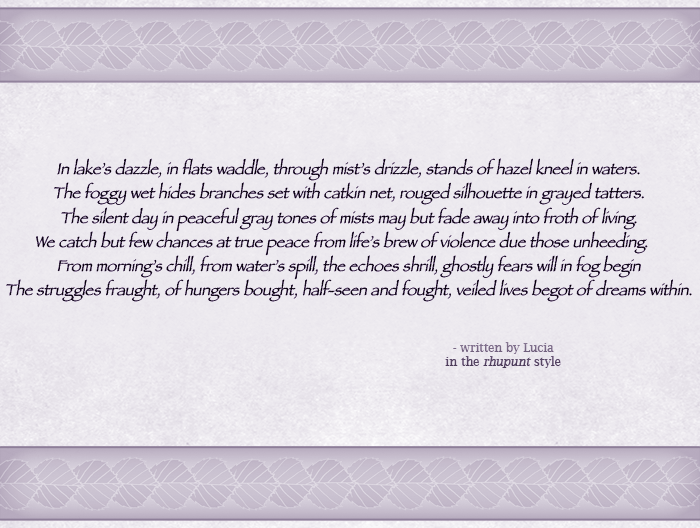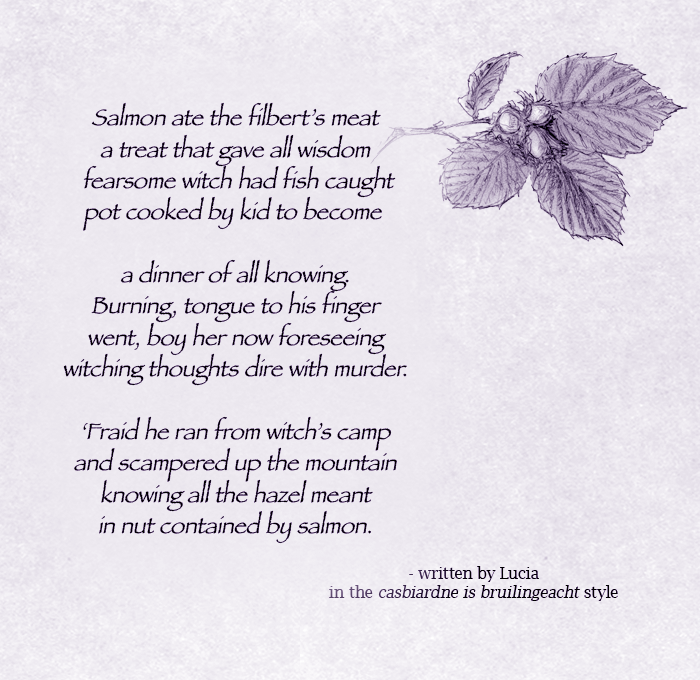Celtic Forms
Probably the best comparison between the influences that made up English is by Professor Tolkien, who understood the English mind/spirit better than most writers. England and English are made up of a mix of several people. In ancient times, most of the west of Europe was controlled by the Celts, who had overrun an earlier people who left behind their megaliths. The Celts were out of Romania and other areas of western Scythia. They had the Scythian style of abstracted animal figures which became even more abstracted when they merged with the western megalithic folk. They were a large, nomadic people, given to extremes of adornment, flowery exaggeration, display of all kind that heightened their personal sense of honor and perfection. They were intensely superstitious, and had a marvelous sense of the spirit world around them.
By the time of the Romans, another group had moved in behind the Celts: the Goths. They were a different kind of people, probably from regions further east than the Scythians, moving into that territory from the high steppes of the Russian plateau. They were a strong people, vivid but brutal, realistic and straight-forward. They, too, loved personal honor and physical perfection, but had a very different view of the spirit world. Their vision of the afterlife was for heroes who died in battle, rather than the land of youth full of strange peoples who passed back and forth to Earth. Their heroes were "manly-men" with great spears named "thruster" and "head-basher." They were giants who honored those who served under them to the point of dying for them. The Celtic warriors were more self-centered, vain to the point of ridiculous display, honorable to their fellows, but more driven by geis and luck than service. However, among the Celts, the bard had risen to the level of the king himself, something rare among the Goths.
Into this mix comes the Roman. Rigid, duty-bound, full of dreams of a settled Empire of working units enjoying peace and prosperity. Patronage, loyalty, authority and practical logistics ruled the Roman who was dismayed and disgusted by the barbarians of the north. But Rome was patient and Rome excelled at the practical task of taming and mastering the northern hoards. Within a couple of centuries, the entire landscape of western Europe had changed. But the influences were there, modifying and changing Roman style.
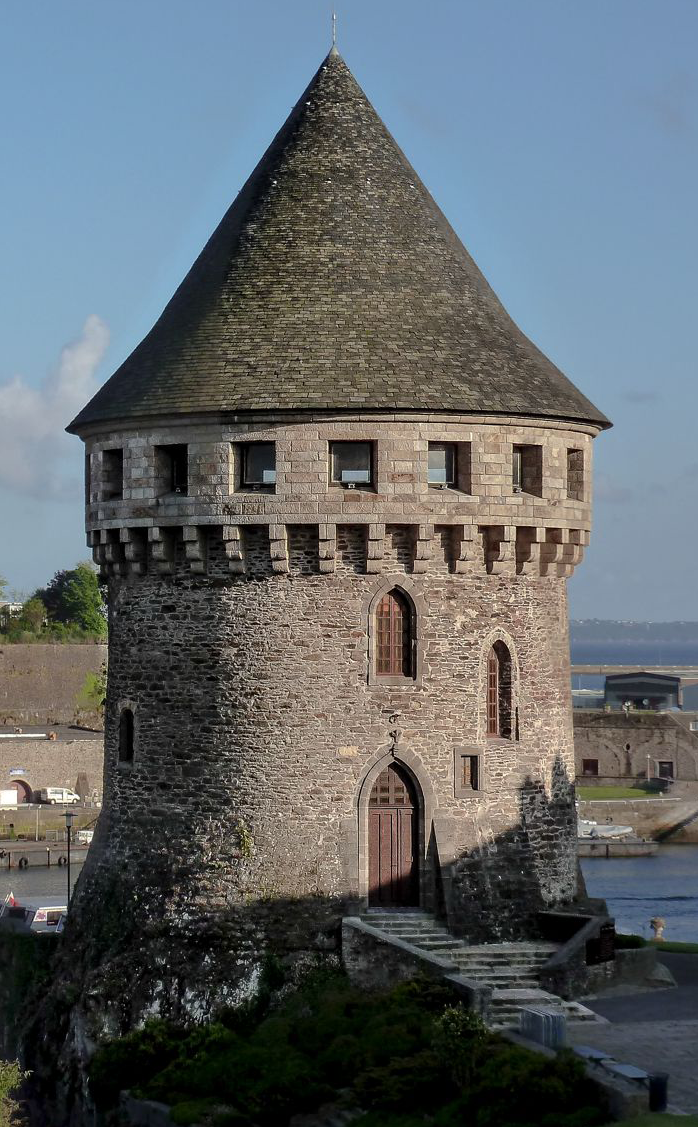
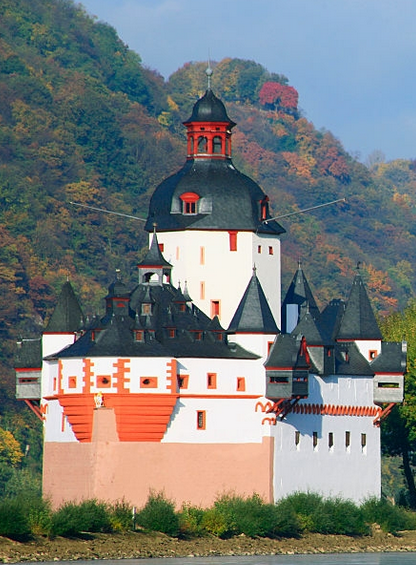
I have chosen these two buildings to show the difference in the Romano-Celtic and the Romano-Gothic. This tower in Brest is not very different from the history of round stone bee-hive architecture that had existed for thousands of years. Made of cut stone rather than dry stone, it is a stunning example of the modified Roman fortification. The slight curve to the roof and the offset door and windows are Celtic. On the right, the style has the Gothic love of vivid color, almost gaudy to Roman eyes. The add-ons are practical, but also somehow not pleasing even as they try to be symmetrical. The line is not as important as the practical need. The decoration is superficial, not embedded in form. The form becomes useful, not inherently pleasing. This often happens over time when buildings are modified, but you find in lands with more Celtic influence that the sacrifice of form is not as common.
This becomes even more clear in language. For the Celt, the sentence was the unit of meaning, what was said. All parts of the sentence, the letters and words, were modified to make the sentence easy to say, flowing, murmuring, undulating with form and beauty. In the Gothic languages, all important was grammar and the integrity of the word. You will almost never see consonants changed to make the sentence easier to say. While German is an exercise of the mouth with twists and turns, Irish can almost be said with a single breath, as if made for singing, not saying, all sacrificed to form. French, a Celtic version of Latin, has all the flattening and murmuring of the Celtic tongues. The harshness of any Latin sounds has given way to smooth singing tones in the front of the mouth. English, a Celtic version of Anglo-Saxon (a Gothic tongue) has the same flattening to a lesser degree.
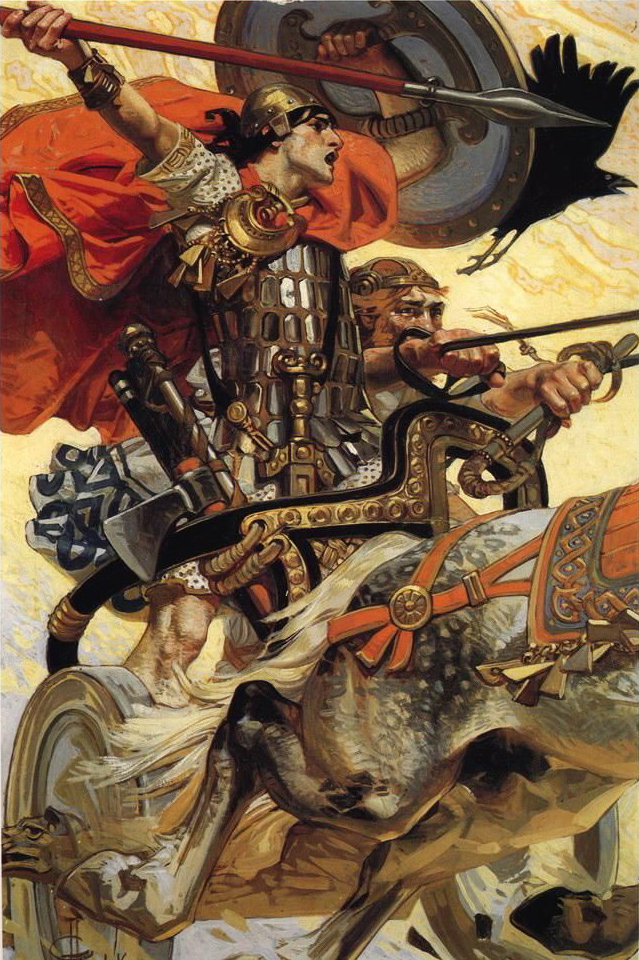
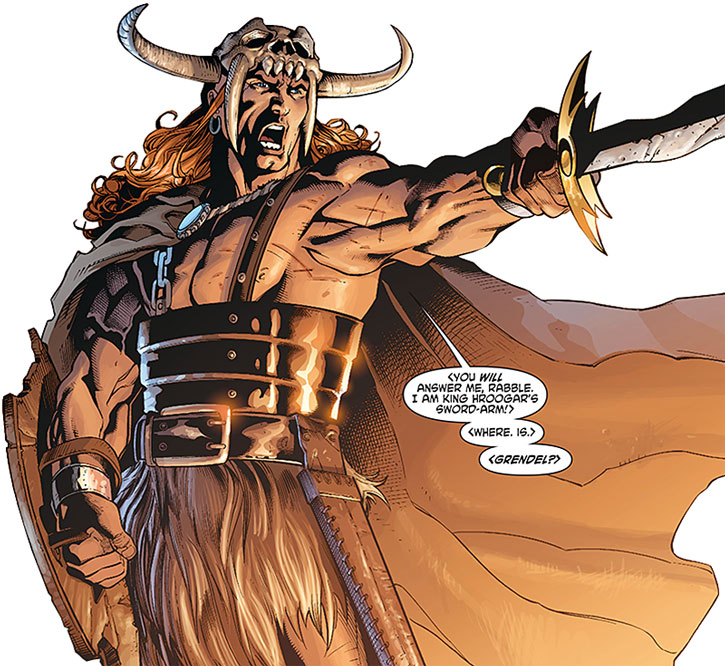
Another way to look at the two roots of English is to look at the heroes of the British Isles: Beowulf and Cuchulain. Both are hounds or wolves. Both are doomed. Both are berserks. The painting by Leyerdecker is of Cuchulain, a beauty without a beard, child of a god, with his glory of armor. Some renditions are a bit more primitive, but this painting captures the glory of the Iron Age. The D.C. comics picture of Beowulf on the right is probably pretty accurate, for the Goths were a huge people who were also barbaric, but terrifying to the Romans. Professor Tolkien deliberately turned away from the violence of the heros of the Red Branch of Ulster (for good reason, the tales are all hopelessly damning) and went, instead, to the Ring Saga for inspiration. He blended in a marvelous way the men of the West seen so clearly in the Riders of Rohan, and the Elves who spoke a common tongue with their half-brothers the men of Westernesse that was Welsh. Tolkien is able to evoke the mysterious half-seen Celtic otherworld with the real and raw world of the Anglo-Saxon. The two ancient peoples are impossibly blended in the peoples of Western Europe, but you see uprisings of one or the other threads when pushed. You see the loyalty and fierce devotion of the leader to his troops in the English officer, the vicious superiority of the Goth in the German wars of the last century; the snobbery of the English is legendary; the fantastic imaginings of the Celt show up in much English and French art and writing from Shakespeare to Art Nouveau. The common thread in both is the love of the individual, the strong dominating female (often a ruler), the love of show and exaggeration among the commoners and the restraint and arrogance of the upper classes.
Samples of Celtic Poetic Forms
Celtic poetry developed into a stunning battle of words and form that inspired national contests that exist into this day. The British love of words is legendary. Now, with a basic vocabulary almost four times larger than other languages due to the heavy borrowing and blending of five language roots, English is becoming an international language. However, it is difficult to learn, and almost impossible to render into Celtic poetic forms due to the clash of Gothic consonants and rules with Celtic dazzle. But we can try. Trying out these forms is a way to learn to write that will twist your mind into new shapes! The basic attitude of the Celt is necessary: a reverence and love of nature, some allusion to the other world, a healthy dose of allegory and double entendre, and a love of word play.
